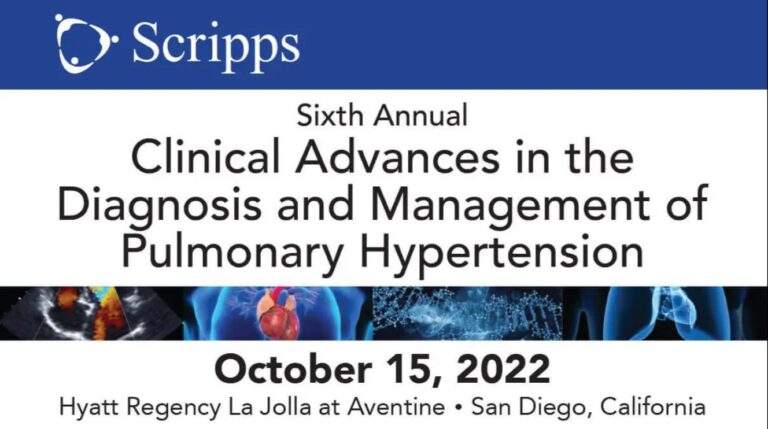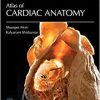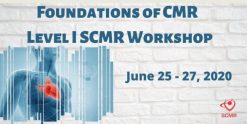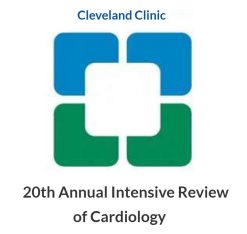Scripps 6th Annual Clinical Advances in the Diagnosis and Management of Pulmonary Hypertension 2022
$20,00
Samples for Courses Can be found here : Free Samples Here!
Scripps 6th Annual Clinical Advances in the Diagnosis and Management of Pulmonary Hypertension 2022
Pulmonary hypertension (PH) is a common and widely misunderstood syndrome that results from a surprisingly large number of disease processes.
Categories: CARDIOLOGY, PULMONARY /RESPIRATORY
Scripps 6th Annual Clinical Advances in the Diagnosis and Management of Pulmonary Hypertension 2022
Description
- Include: 8 videos + 1 pdf, size: 1 GB
- Target Audience: pulmonologist
Information:
Conference Overview:
Pulmonary hypertension (PH) is a common and widely misunderstood syndrome that results from a surprisingly large number of disease processes. It can occur at any age and the risk of developing PH increases with age and other medical conditions. Great strides have been made in the past 15 years in diagnosing and treating pulmonary arterial hypertension (PAH), so the natural history of PAH is rapidly changing. On the other hand, the more common clinical variant pulmonary venous hypertension (PVH), has been largely unaffected by medical therapy.
In addition, there is often a divide between those who treat PAH and clinicians whose patients have PVH and are frustrated by the lack of effective therapy. This conference will be unique in that it will cover all forms of pulmonary hypertension. Expert faculty will discuss the epidemiology of PH, how PH is diagnosed, and the poor outcomes associated with PH when left untreated. Clinicians will leave with a better understanding of the difference between PAH and PVH and why the difference matters. Therapies for PAH and PVH will also be discussed with reference to current clinical guidelines. Participants will return to their practice equipped with the latest evidence base and practical information to improve patient outcomes.
Educational Objectives:
After attending this live activity, participants should be able to:
• Describe the epidemiology and pathophysiology of pulmonary hypertension.
• Determine who is at risk for pulmonary hypertension and effectively diagnose patients.
• Recognize the difference between PAH and PVH and how this translates into therapy.
• Outline the current approach to pulmonary hypertension treatment in the presence of related or underlying diseases.
• Evaluate current pharmacologic and medical management strategies for patients with pulmonary hypertension.
• Incorporate novel therapies into patient care for improved outcomes.
• Identify when to refer patients for specialty treatment.
After attending this live activity, participants should be able to:
• Describe the epidemiology and pathophysiology of pulmonary hypertension.
• Determine who is at risk for pulmonary hypertension and effectively diagnose patients.
• Recognize the difference between PAH and PVH and how this translates into therapy.
• Outline the current approach to pulmonary hypertension treatment in the presence of related or underlying diseases.
• Evaluate current pharmacologic and medical management strategies for patients with pulmonary hypertension.
• Incorporate novel therapies into patient care for improved outcomes.
• Identify when to refer patients for specialty treatment.
Topics:
- brochure_ph22.pdf
- Chronic Thromboembolic Pulmonary Hypertension- Kelly Fan, MD.mp4
- Interventional Treatment of Pulmonary Hypertension and Tricuspid Disease- Curtiss Stinis, MD.mp4
- Medical Management of PAH- Optimizing Therapy- J. Thomas Heywood, MD.mp4
- New Therapies for Pulmonary Venous Hypertension- Rajeev Mohan, MD.mp4
- Pulmonary Arterial Hypertension- Diagnosis and Work-up- Ajay Srivastava, MD.mp4
- Pulmonary Hypertension and Adult Congenital Heart Disease- Laith Alshawabkeh, MD.mp4
- Pulmonary Venous Hypertension- J. Thomas Heywood, MD.mp4
- When the Right Ventricle Fails- Diagnosis and Therapy- Ajay Srivastava, MD.mp4
Related products
$40,00
$40,00
HARVARD MEDICINE
$70,00
$25,00
CARDIOLOGY
$50,00










